What Color To Paint a Basement Ceiling? 7 Tips
Author: Rick Worst | Editor: Omar Alonso
Review & Research: Jen Worst & Chris Miller

You might wonder what color to paint a basement ceiling as you're renovating and decorating. It’s one step you don’t want to rush through. The paint you choose for the basement ceiling can help transform the space.
It’s a shame when someone neglects their basement. When properly finished, a basement can be an incredible extension of your home. They can be ideal for many purposes, especially when custom-designed to fit a specific desire.
This article will cover how to use paint to your advantage, review a list of available basement ceiling colors and ideas, and wrap up by reviewing some valuable tips.
Using Paint To Change Your Basement
There are many ways to change a space. Furniture, walls, and flooring all play a role. But paint is another feature that deserves some attention. If you know what you’re doing, paint can bring out the best in a room’s design, no matter what type of basement you have.
Bright vs. Dark
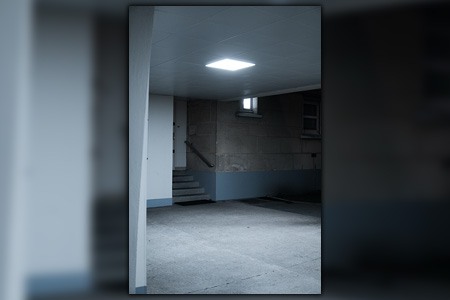
A good starting point for figuring out what color to paint a basement ceiling is selecting a dark or light theme. By making this bite-size decision first, you can narrow down the colors you’re likely to want.
If your basement has a darker feel with lacking windows, you can lean into it to create a cavern-like atmosphere. This dark color scheme is perfect if you want to use your basement for a home movie theater or create a more relaxed space.
On the other hand, you can also use bright colors to open the space up. Using a lighter color to paint your basement ceiling can help the area seem larger, more open, and less restrictive. It can help balance out any lack of natural light.
Match Walls or Not?
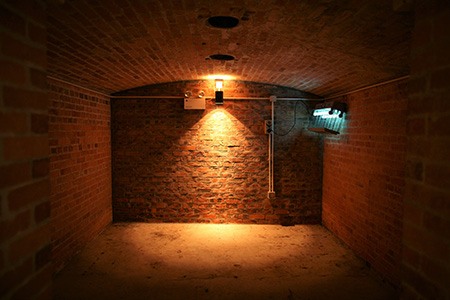
Another characteristic you should consider is the color of the walls. Since they share edges with the ceiling, the two elements are closely intertwined. Because of this codependency, it’s best to select the color of the walls and ceiling in unison. You can even use ceiling paint on walls if you want a very low gloss option.
Many times people choose to use different colors between the walls and ceiling. If this is true for the rest of your house, continuing the trend is not a bad idea. Doing so can provide a nice contrast, especially if you want to use darker walls but still want the space to feel open by using a lighter-colored ceiling.
But that’s not a necessity. And if you’re leaning into the dark atmosphere of the basement, then having dark walls and ceiling is a real possibility. One that can be great for creating a comfortable ambiance. You can even use two dark tones that complement each other, but don't try to make them too similar of shades since paint can dry darker and lighter than expected, which could ruin your detail-oriented plan.
Lighting, Molding, & Other Ideas
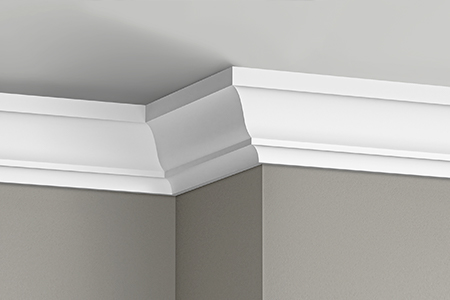
Although we’re focused on basement ceiling paint colors, you should consider any finishing touches before handling the paint. Sometimes you can avoid making extra work or visible repairs by thinking ahead.
Since basements tend to lack natural light, installing ceiling-mounted lights can be worthwhile. Take care of this before painting to ensure you don’t damage fresh paint. It also helps you cover up any screw holes or hidden supports.
You can also use molding in the corners between the walls and ceiling. It can be slightly more complicated to do crown molding than floor molding, but the result is well worth the effort. It provides a more finished appearance with deep character.
If there is something else you might want to put in the ceiling, try to figure it out before painting. This step might include a projector, exercise equipment, or anything else you might hang from the ceiling.
What Color To Paint a Basement Ceiling?
Now it’s time to get down to the heart of the question. What basement ceiling colors should you choose? Let’s review some of the top choices so you can put this question to rest.
White or Neutral
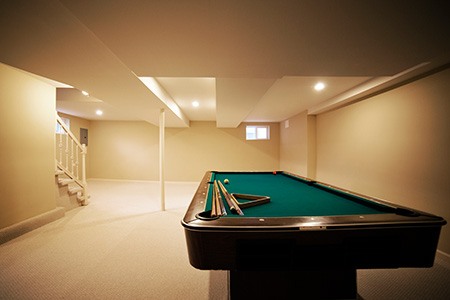
The majority will select a white, off-white, or other neutral, bright color for their basement ceiling. This general rule applies to many ceilings.
Using these colors is a safe bet because they allow the space to feel open. Bright, airy colors help us feel like we’re in a larger space. Since some basements can be small or dark, having a light-colored ceiling is a good idea.
It’s also a wise decision because you can balance a neutral ceiling with many other colors. These neutrals can go with other neutrals or bold colors. And nearly anything in between. Your options for wall color, furniture choices, and artistic touches are left wide open.
Bold Colors or Black
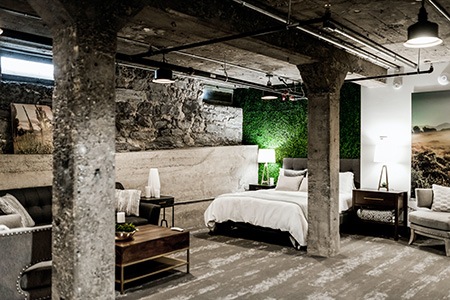
There’s nothing better than curling up in a comfy space to enjoy peace or watch a thrilling movie. Dark colors can help customize the area accordingly.
Dark colors can make the space feel more enclosed. So it’s wise to use caution when going with this. It’s also slightly more challenging to change the color if you go with something incredibly bold or dark.
But for that movie-theater feel, go with a dark color. Take the risk to make the space unique. It could be a cave to enjoy with friends, a dance area to make late-night memories, or a sports fan getaway to catch all the games.
Using Multiple Colors
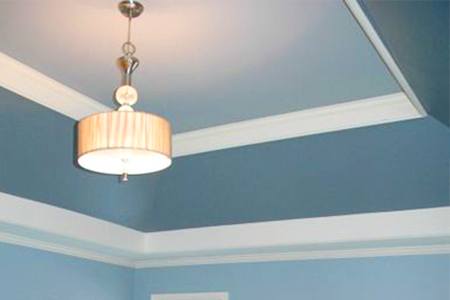
You aren’t limited by those two options. Basements are an excellent area to add character through multiple colors.
Recessed areas provide well-defined rules for using multiple colors. But you can also pull out the tape and use your imagination. Take some precautions to ensure your lines are crisp, and you can create amazing patterns with some tape and time.
You can also use different colors to define select spaces throughout a basement. The lounge area for engaging in conversation can be light. And then a cozy corner with a poker table, movie theater area, or other activity could be dark.
When wondering what color to paint a basement ceiling, you might find that two or more work best. It can open up a world of possibilities.
Things To Keep in Mind Before Painting
When painting a basement ceiling, there are some crucial tips to keep in mind no matter what types of paint you're using.
Painting an Exposed Basement Ceiling
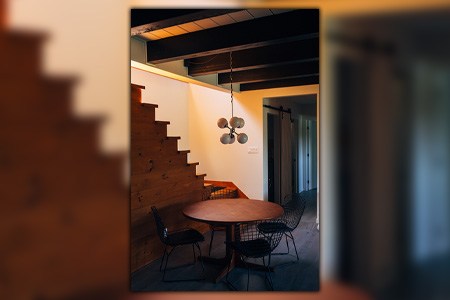
If your basement ceiling is exposed, carefully select the paint and types of primer you use. Many interior paints are designed for drywall. If you are painting wood, concrete, or another material, purchase the paint best for that surface.
For wood, some people like to use oil-based paints instead of latex. You also might want to go with a higher shine as the wood surface can give any color a duller look.
If you have a concrete ceiling, you might opt for latex paints. They help provide a moisture barrier. Epoxy is common on concrete too. It helps fill in blemishes.
Protect Yourself & Your Comfort
Basements can lack ventilation. During the painting process, you might encounter strong odors or fumes. Keeping the windows open and using fans might be a good idea. Just make sure you secure the basement windows again when you're done.
Additionally, painting a ceiling can be incredibly awkward, and you may need to reach out, bend backward, and get into odd positions. Getting the right equipment for the job, including a ladder with the right parts like a shelf, step stool, or a roller type of paint brush with an extension, can help you stay comfortable.
Prep Work Helps Avoid Problems

Some professional painters are so talented that they rarely need to use tape. They can cut clean lines across long spans without making a mistake.
But unless you have this same level of confidence, it’s worth putting in the effort into prep work like taping off lines. This action is usually pretty limited for ceilings due to the lack of outlets, doors, and windows. Which means the prep work can be quick.
The only problem is that painting the ceiling can result in paint drops almost everywhere. Use a large drop cloth to protect everything under the ceiling. And better yet, also move furniture and items away from the area before painting.
What Color To Paint a Basement Ceiling? Your Choice!
Whatever basement ceiling paint colors you choose, use the right paint, be aware of ventilation issues, and do the prep work to make the job painless. Follow these steps, and you’ll create that basement space you want in no time.
Take a risk if you want and go for a unique look. Black or dark colors are great for cozy movie-theater basements. You could use multiple colors to define spaces or give the ceiling a unique look.
Choosing what color to paint a basement ceiling can be a challenge. Stick with a light, neutral color to open up the space and follow the usual trend many people choose.



